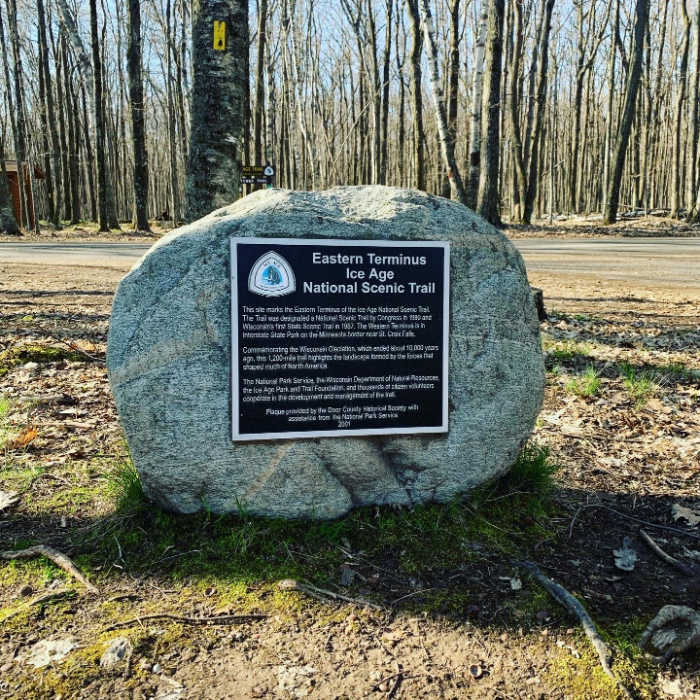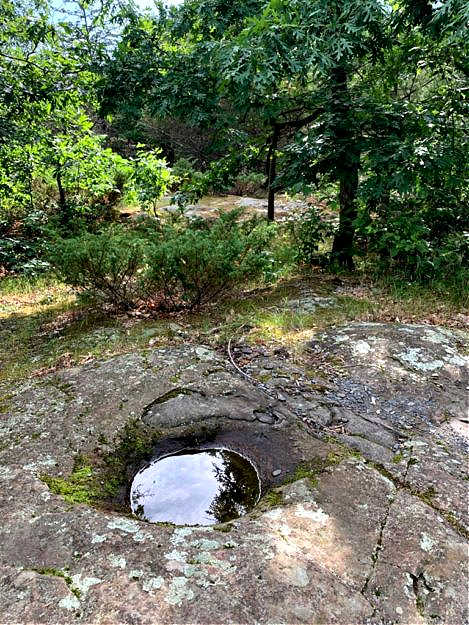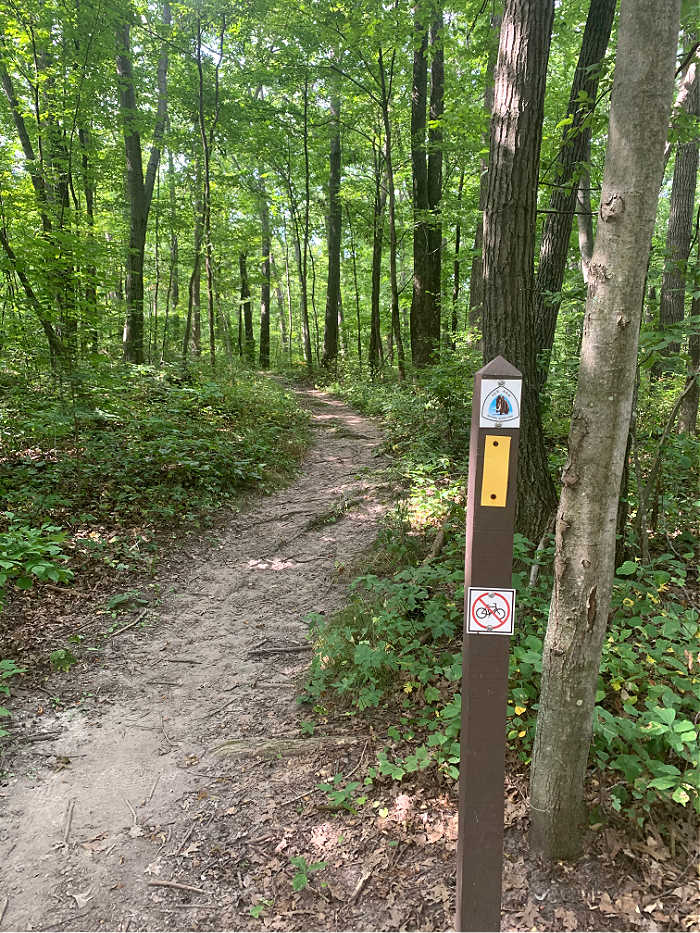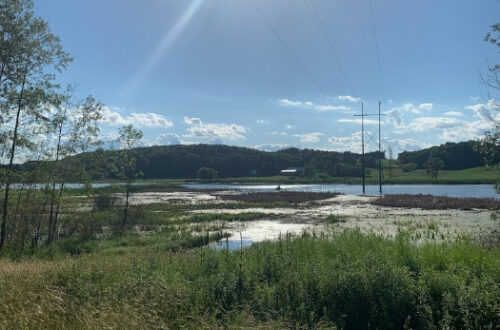Ice Age Trail – National Scenic Trail

The Ice Age Trail is a Nation Scenic Trail. National Scenic Trails are part of the National Park System. The premise of National Scenic Trails are to connect communities, show off landmarks and pristine scenery on non- motorized trails through public land. The trails part of the National Scenic Trail system include: Appalachian Trail, Arizona National Scenic Trail, The Continental Divide Trail, Florida Trail, Ice Age Trail, Natchez Trace, New England Trail, North Country Trail, Pacific Crest Trail, Pacific Northwest Trail, and Potomac Heritage Trail.
About the Ice Age Trail
Location
The Ice Age Trail is located in the state of Wisconsin. The trail stretches from St. Croix Falls to Sturgeon Bay. The trail is nearly 1,200 miles in length that follows the glacial terminal moraine.
The western terminus is located in the Interstate Park in St. Croix Falls, Wisconsin located in Polk County. The St. Croix River borders the park and the state of Minnesota. The eastern terminus is located in Potawatomi State Park in Sturgeon, Bay Wisconsin located in Door County.

Eastern Terminus 
Western Terminus
Traversing through state parks, national and county forest land and private lands, the trail travels through 31 counties in Wisconsin. The trail winds through typical hiking trail, but also travels through Wisconsin trail communities.
History
The formation of the Ice Age Trail began in 1926, when the Milwaukee chapter of the Izaac Walton League purchased 800 acres in and around Mauthe Lake an area in the Northern Kettle Unit. The area became known as the Kettle Moraine State Forest.
Raymond Zillmer
One of the most ardent supporters of keeping this area protected was Raymond Zillmer, who was an attorney, hiker and lover of nature. He single handedly convinced two governors to purchase additional lands for the state forest. Zillmer envisioned extending the trails in the Kettle Moraine State Forest to several hundred miles following the glacial terminal moraine
His goal was to establish a national park in Wisconsin. In order to establish the park, he founded the Ice Age Park & Trail Foundation in 1958. He was able to spark interest in the idea of the park within the National Park Service. Bills were introduced to congress with the idea of a linear national park and trail system. Unfortunately Raymond Zillmer passed away prior to his dream coming to fruition.
National Scenic Trail
Later the National Park Service, determined that a linear park would be tremendously challenging to maintain and the idea fell by the wayside. The concept did not go away though, and through a collaborative effort of government officials, grassroot supporters and national park staff they developed the Ice Age National Scientific Reserve. The Ice Age Reserve legislation was signed into law by President Johnson in 1964.
The 1970’s saw growth of the trail. The Glacial Hiking Trail was the starting point of the trail. A few of the new sections of trail were built on private lands with the verbal agreement of land owners.
The first thru hiker completed the trail and then the Ice Age Trail finally became part of the National Trails System. President Jimmy Carter signed into law on October 3, 1980, designating the park Ice Age National Scenic Trail.
Geology
The glacier was key in sculpting the landscape of Wisconsin. The last ice age ended roughly 10,000 years ago and is named the Wisconsin Glaciation. At the end of this glacial period ridges formed in the thick glacial ice. Spanning greater than 120 miles in length, within the ridges crater like basins formed that filled with glacial ice. This area named was Kettle Moraine by geologist, who discovered this in the 1870’s.
The Ice Age Trail winds through the scenic terminal moraine created by glaciers. The trail has open prairie, mature hardwood forest and merges with lakes and rivers.
Some of the geologic features you will encounter, as you embark along the trail: kames, erratics, drumlins, eskers, tunnel channels, ice-walled-lake plains, outwash plains, lakes and the unglaciated features of the Driftless Area. The Ice Age Trail Guidebook will have detailed information on each glacial feature.

A few trail highlights include soil, gravel and boulders left in the wake of the glacier. The Niagara Escarpment and Dolomite that you will find in Door County is 410 million and 440 million years old. Adams, Dane, Columbia, Green, Rock, and Sauk counties showcase sandstone outcroppings that are 460 million and 550 million years old. Polk county shines with massive basalt rock bluffs. You will find quartzite in the Baraboo Hills and the Blue Hills that is 1.6 billion years old. The spectacular rock outcrops at Grandfather Falls, in Lincoln County, and Eau Claire Dells in, Marathon County that are 1.8 billion years old. Every turn along the trail is a new feature to explore!

Segments
The Ice Age Trail is divided into named segments of varied length. The sections traverse 30 different counties in Wisconsin. There are 105 total segments. Each segment has varying topography. My lifetime goal is to run each segment.
Trail Use
The trail is for foot traffic only. The trail is perfect for trail running, hiking and snowshoeing. Biking is not allowed except in certain sections that intercept with state biking trails. Dogs must remain on a leash along the Ice Age Trail.
Trail markers have yellow blazes. There are directional arrows throughout the trail. I would highly recommend utilizing the Guthook Guides App. You can use the app while out on the trail for navigation. It also shows parking areas, camping, water sources and cold catches. You can send parking information to your phone map app.

Along the Ice Age Trail, you will find different types of camping. Camping along the trail varies from state camp grounds to back pack campsites, primitive campsites, dispersed camping areas and backpack shelters.
Sections of the trail are in hunting areas. Areas of private land sections may be closed during hunting seasons. Also, weather can cause trail closures so monitor this prior to setting out.
Trail Maintenance
The trail is maintained by volunteers. There are nineteen Ice Age Trail Alliance volunteer chapters throughout Wisconsin. The Ice Age Trail Alliance Mobile Skills Crew program coordinates trail building and maintenance events. These events help shape new sections of trail. Many of the chapters have Facebook groups that list trail events and trail conditions.

Resources for the Trail
I would highly recommend to purchase the Ice Age Trail Guidebook. The guidebook has a glossary of glacial terms and detailed general information on the trail. The guide also has detailed section information on where to park, topography and unique features of the section. In each section, it also details any area services. Guthook Guides App is an excellent navigation tool for use on the trail.
The Ice Age Trail website has tons of information. From the website, you can also join the alliance. Your membership supports the trail.
Summary
The Ice Age Trail is meant to be explored. Every section I have run has left an impression on me and makes me want to explore more. Follow along as I run or hike each section of the Ice Age Trail. If you have not run trails before check out my post on Trail Running for Beginners I would love to hear what sections you have run!







[…] Kewaunee River Segment of the Ice Age Trail follows along with the Ahnapee State Trail. The Ice Age Trail portion of the Ahnapee State trail is 12.5 miles. The trail is crushed stone and is relatively […]
[…] La Budde Creek, and Walla Hi sections of the Ice Age Trail are amazing to say the least. I have included them all in one post, as I ran all three of the trail […]
[…] The Ice Age Trail is a unique trail that mostly follows terminal moraine from the last ice age. As the glacier retreated, it left behind a multitude of glacial features. Glacial features are showcased throughout the extraordinary trail. The Ice Age Trail is a 1,200 mile long national scenic trail. It is part of the National Park System. The trail is entirely in the state of Wisconsin. […]
[…] trail run on the Point Beach Segment of the Ice Age Trail will leave you wanting more. From the beauty of the Lake Michigan Shoreline, the sand dunes, the […]
[…] Parnell segment of the Ice Age Trail does not disappoint. Each hill climb and twist of the trail reveals more beautiful […]
[…] had several weeks to complete the second run. I decided to head out to a section of the Ice Age Trail and run a 25 K. It was fitting to start the 25 k at the terminus, as one of my life goals is to run […]
[…] Ice Age Trail is a perfect system of trails to run, with many different sections to choose from. The Ice Age […]